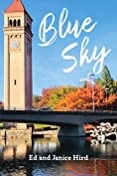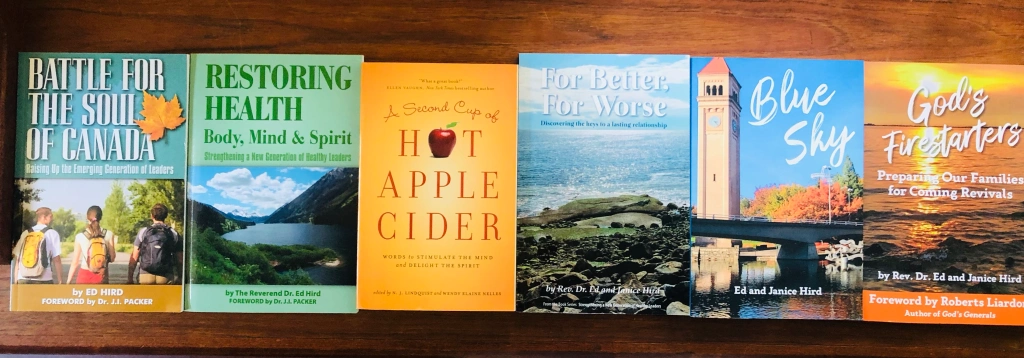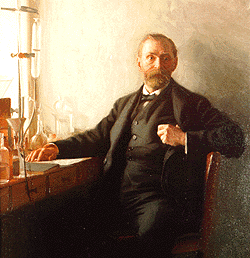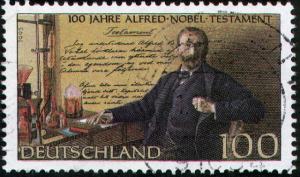By the Rev. Dr. Ed Hird
My Grandfather Allen loved both Stanley Park and the Stanley Cup. During the Great Depression, he was bumped from being a CPR Railway Engineer to shoving coal. He had to work seven days a week and had little time to see his children. But Grandpa Allen was happy to even have a job in those tough times. When he retired, Grandpa had more time available. He became the co-ordinator for the Stanley Park Shuffleboard Court, and walked every day the 5 miles around the Stanley Park seawall. As a young boy, I loved walking and talking with my Grandpa, feeding the squirrels and enjoying the Park scenery. Stanley Park in beautiful Vancouver BC is still full of many memories for me.
My Grandpa and Nana Allen were also great Stanley Cup fans, never missing a televised game. One of my three sons is such a dedicated hockey fan that if PhDs were offered for studying the NHL, Vancouver Canucks, and Wayne Gretzky, I am sure that we would have a Rhodes Scholar on our hands.
Under Wayne Gretzky’s leadership, The Edmonton Oilers won the Stanley Cup for the fourth time in five years. After one of those victories, Gretzky said, ‘‘You know, I’ve held  women and babies. I’ve held jewels and money. But nothing will ever feel as good as holding that cup.’ The recently-retired ‘Great One’ was one of the most accurate shooters in history, was named the NHL’s Most Valuable Player every year from 1980 to 1987, and held over 40 scoring records in the NHL – almost every record for goals and assists that can be achieved. As one sports columnist put it, Gretzky was ‘not merely the best hockey player in the world, but one of the nicest and most unspoiled.’
women and babies. I’ve held jewels and money. But nothing will ever feel as good as holding that cup.’ The recently-retired ‘Great One’ was one of the most accurate shooters in history, was named the NHL’s Most Valuable Player every year from 1980 to 1987, and held over 40 scoring records in the NHL – almost every record for goals and assists that can be achieved. As one sports columnist put it, Gretzky was ‘not merely the best hockey player in the world, but one of the nicest and most unspoiled.’
It is not just Wayne Gretzky but every hockey player who dreams of the moment when he might hoist the coveted Stanley Cup. As a sports commentator put it, the Stanley Cup, sometimes called the ‘Big Mug’, is the hottest thing on ice. As the oldest trophy in North America, being over 100 years old, it’s covered with names of hundreds of players who have played on winning teams. “Hockey, more than any other sport, has placed its emphasis on trophies and cups,” said Clarence S. Campbell, former president of the National Hockey League. “Ever since 1893, the world of hockey has revolved around the Stanley Cup. And the history of pro hockey is the history of the Stanley Cup. I would say that the Cup is the best-known trophy in North American sport today.” Hockey writer Gerald Eskenazi of the New York Times commented during a telecast of the 1974 Stanley Cup finals: “The Stanley Cup is uniquely Canadian. We have nothing in this country that transcends how the Canadians feel about the Stanley Cup as an ultimate goal –not the Super Bowl, not the World Series, nothing…”
 The old Cup has been lost, stolen, dented, repaired, and mounted on new bases that grew taller and taller with the years. One player on his way home from a victory party in Ottawa drop-kicked the cup into a canal, then returned the next day to retrieve it. Another team forgot the cup in a photographer’s studio, so the studio cleaning woman took it home and grew geraniums in it! Colorado’s Sylvian Lefebre even went so far as to have his child baptized in the Cup a few years ago! Twice in the late 1960’s, the cup was stolen from the Hockey Hall of Fame in Toronto. In 1968, a replica was made. It is this stand-in that we now see presented to the champion team. The original stays safely in the Hockey Hall of Fame, guarded by electronic burglar alarms.
The old Cup has been lost, stolen, dented, repaired, and mounted on new bases that grew taller and taller with the years. One player on his way home from a victory party in Ottawa drop-kicked the cup into a canal, then returned the next day to retrieve it. Another team forgot the cup in a photographer’s studio, so the studio cleaning woman took it home and grew geraniums in it! Colorado’s Sylvian Lefebre even went so far as to have his child baptized in the Cup a few years ago! Twice in the late 1960’s, the cup was stolen from the Hockey Hall of Fame in Toronto. In 1968, a replica was made. It is this stand-in that we now see presented to the champion team. The original stays safely in the Hockey Hall of Fame, guarded by electronic burglar alarms.
I had no idea until recently that both the Stanley Cup and Stanley Park are named after the same Governor General of Canada, Frederick Arthur Stanley. When Lord Stanley moved to Canada, his seven sons became passionate hockey players. Being kicked off the public rinks by jealous figure skaters, the Stanley brothers formed their own team ‘The Rideau Rebels’ and played on the frozen lawn of the Governor General’s Rideau Hall residence. Lord Stanley’s seven sons then cornered their father and convinced him to donate a $50 rose bowl for the winner of their amateur competitions. The first winners of the Stanley Cup were the predecessors of the famous Montreal Canadiens who have won the Cup more than any other team in history. It is safe to say that no other cup in history has ever inspired so many brilliant goals, fabulous rushes, split-second saves, and overtime breakthroughs.
 Lord Stanley never actually saw a Stanley Cup competition, as he moved back to England in 1893 as the sixteenth Earl of Derby. In England, Lord Stanley went on to become the Lord Mayor of Liverpool, the first Chancellor of Liverpool University, and the president of the British Empire League.
Lord Stanley never actually saw a Stanley Cup competition, as he moved back to England in 1893 as the sixteenth Earl of Derby. In England, Lord Stanley went on to become the Lord Mayor of Liverpool, the first Chancellor of Liverpool University, and the president of the British Empire League.
And why did Lord Stanley end up having a park in Vancouver named after him? Once again it was CPR influence by the same William Van Horne who kept BC in Confederation and gave Vancouver its Dutch namesake.
My prayer for all Lord Stanley Cup/Park fans is that we may realize that through faith in Jesus Christ, we have an even greater trophy waiting for us in eternity (Philippians 3:14) Let us run and skate in such a way as to get the prize, the crown of righteousness in the Lord.
The Rev. Dr. Ed Hird, BSW, MDiv, DMin
-award-winning author of the book Battle for the Soul of Canada
-previously published in the North Shore News/Deep Cove Crier
P. S. Click this Amazon link to view for free the first two chapters of our new novel Blue Sky.
“I’m afraid there’s been an accident…”
 Sandy Brown and her family have just moved to Spokane, Washington where her husband, Scott, is pastoring a new church. With a fresh start, Sandy is determined to devote more time to her four children. But, within weeks of settling in their new life, the Brown family is plunged into turmoil.
Sandy Brown and her family have just moved to Spokane, Washington where her husband, Scott, is pastoring a new church. With a fresh start, Sandy is determined to devote more time to her four children. But, within weeks of settling in their new life, the Brown family is plunged into turmoil.
Sandy receives shocking news that her children aren’t safe, which brings back haunting memories of the trauma she experienced as a girl. Then, the unthinkable happens…
A brutal attack puts Sandy on the brink of losing everything she’s loved. Her faith in God and the family she cherishes are pushed to the ultimate limit.
Is healing possible when so many loved ones are hurt? Are miracles really possible through the power of prayer? Can life return to the way it was before?
Blue Sky reveals how a mother’s most basic instinct isn’t for survival… but for family.
If you’re a fan of Karen Kingsbury, then you’ll love Blue Sky. Get your copy today on paperback or kindle.
-Click to check out our marriage book For Better For Worse: discovering the keys to a lasting relationship on Amazon. You can even read the first two chapters for free to see if the book speaks to you.

-The sequel book Restoring Health: body, mind and spirit is available online with Amazon.com in both paperback and ebook form. Dr. JI Packer wrote the foreword, saying “I heartily commend what he has written.” The book focuses on strengthening a new generation of healthy leaders. Drawing on examples from Titus’ healthy leadership in the pirate island of Crete, it shows how we can embrace a holistically healthy life.

In Canada, Amazon.ca has the book available in paperback and ebook. It is also posted on Amazon UK (paperback and ebook), Amazon France (paperback and ebook), and Amazon Germany (paperback and ebook).
Restoring Health is also available online on Barnes and Noble in both paperback and Nook/ebook form. Nook gives a sample of the book to read online.
Indigo also offers the paperback and the Kobo ebook version. You can also obtain it through ITunes as an IBook.
-Click to purchase the Companion Bible Study by Jan Cox (for the Battle of the Soul of Canada) in both paperback and Kindle on Amazon.com and Amazon.ca
Indigo also offers the paperback and the Kobo ebook version. You can also obtain it through ITunes as an IBook.

-Click to purchase the Companion Bible Study by Jan Cox (for the Battle of the Soul of Canada) in both paperback and Kindle on Amazon.com and Amazon.ca

To receive a personally signed copy of any of our books within North America, just etransfer at ed_hird@telus.net, giving your address. Cheques are also acceptable.









 named Dynamite, taking it from the Greek word ‘dynamos’, meaning ‘power’. World War One and Two devoured millions of lives, indirectly due to the technological advances in Alfred Nobel’s laboratories. In the past, the gunsmoke from cannons used to stop battles, because the massive clouds of smoke blocked the view of the generals.
named Dynamite, taking it from the Greek word ‘dynamos’, meaning ‘power’. World War One and Two devoured millions of lives, indirectly due to the technological advances in Alfred Nobel’s laboratories. In the past, the gunsmoke from cannons used to stop battles, because the massive clouds of smoke blocked the view of the generals. combining nitroglycerin with kieselguhr clay, Alfred created a stable, transportable explosive, which he called dynamite. England, being cultural conservative, would have nothing to do with dynamite. So instead the Scots cornered the dynamite market.
combining nitroglycerin with kieselguhr clay, Alfred created a stable, transportable explosive, which he called dynamite. England, being cultural conservative, would have nothing to do with dynamite. So instead the Scots cornered the dynamite market. for the Panama Canal in 1914. Sadly enough, his dynamite also blasted countless lives from 1914- to 1918, including the lives of my great-uncles William and Harry.
for the Panama Canal in 1914. Sadly enough, his dynamite also blasted countless lives from 1914- to 1918, including the lives of my great-uncles William and Harry. fact that it is never too late to change, never too late to start again. When Alfred’s older brother Ludwig died, one newspaper accidentally printed Alfred’s obituary instead. The obituary described Alfred as a man who became rich by enabling people to kill each other in unprecedented numbers.
fact that it is never too late to change, never too late to start again. When Alfred’s older brother Ludwig died, one newspaper accidentally printed Alfred’s obituary instead. The obituary described Alfred as a man who became rich by enabling people to kill each other in unprecedented numbers. intriguing people who have received the Nobel Peace Prize, and whose lives have been radically changed by that very act. The names have become part and parcel of our recent history, names like Martin Luther King Jr, Nelson Mandela, F.W. De Klerk, Albert Schweitzer, Theodore Roosevelt, Woodrow Wilson, Andrei Sakharov, Yitzhak Rabin, Mikhail Gorbachev, Elie Wiesel, Lech Walesa, Mother Teresa, Anwar Sadat, and Menachim Begin. The first Canadian to ever receive the Nobel Peace Prize was the much-loved Prime Minister Lester Pearson, for his role in helping to end the Suez Canal crisis. The first person ever to receive the Nobel Peace Prize was Jean Henri Dunant, the founder of the International Red Cross Society, back in 1901.
intriguing people who have received the Nobel Peace Prize, and whose lives have been radically changed by that very act. The names have become part and parcel of our recent history, names like Martin Luther King Jr, Nelson Mandela, F.W. De Klerk, Albert Schweitzer, Theodore Roosevelt, Woodrow Wilson, Andrei Sakharov, Yitzhak Rabin, Mikhail Gorbachev, Elie Wiesel, Lech Walesa, Mother Teresa, Anwar Sadat, and Menachim Begin. The first Canadian to ever receive the Nobel Peace Prize was the much-loved Prime Minister Lester Pearson, for his role in helping to end the Suez Canal crisis. The first person ever to receive the Nobel Peace Prize was Jean Henri Dunant, the founder of the International Red Cross Society, back in 1901.